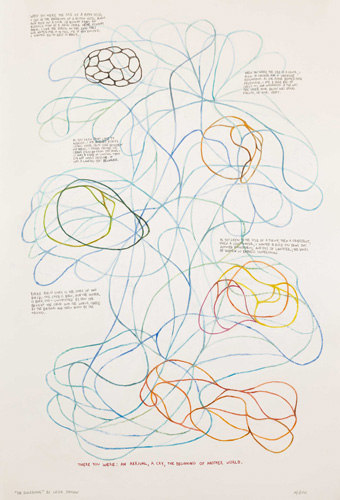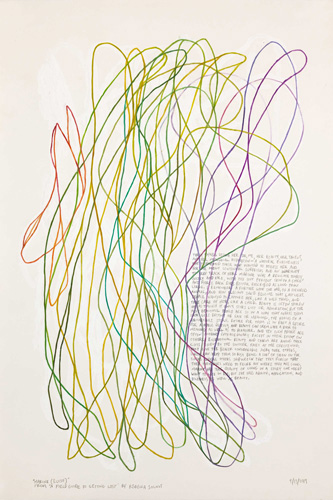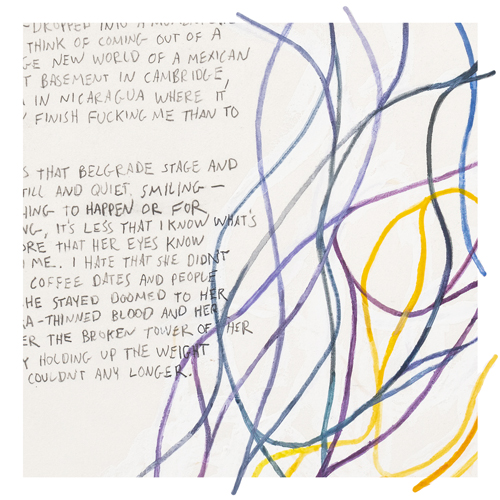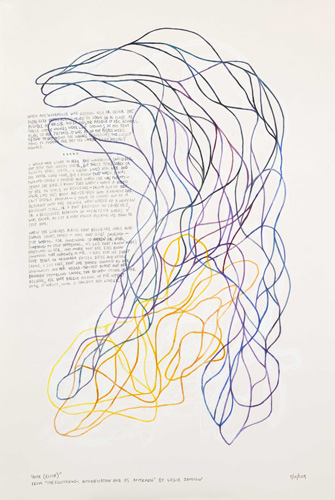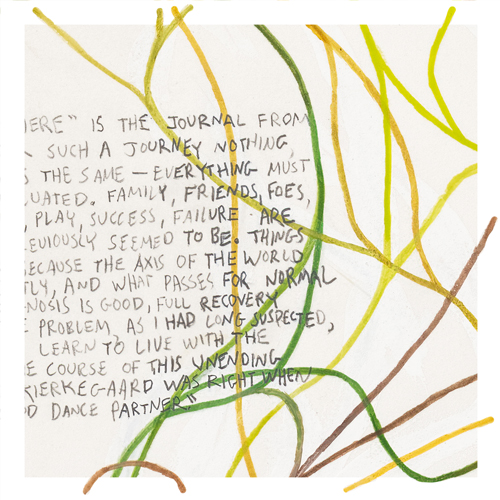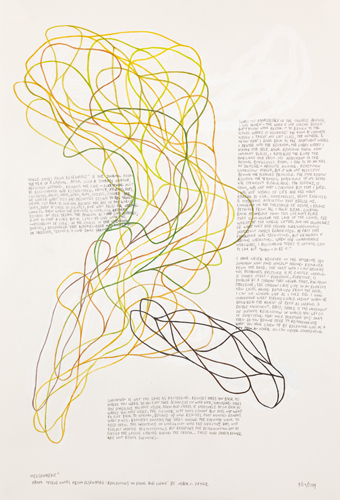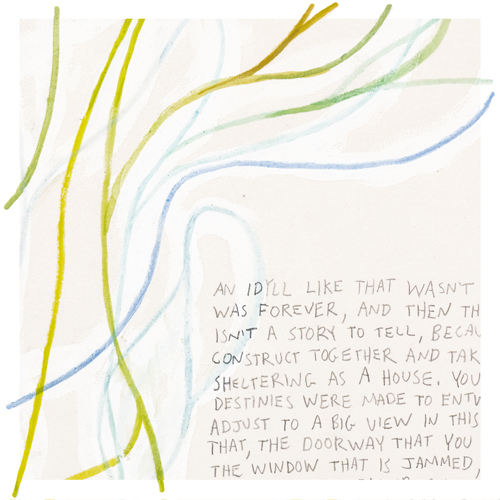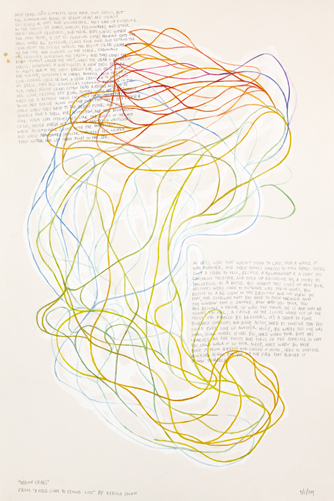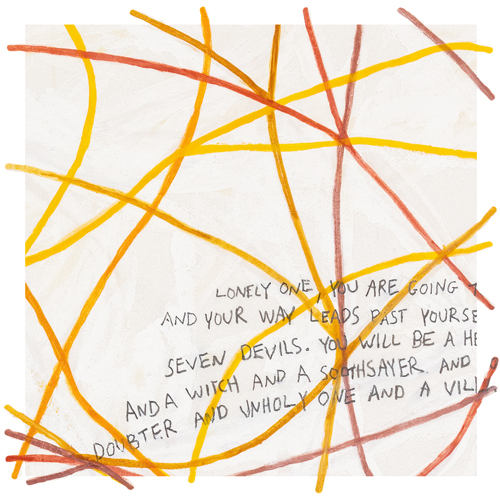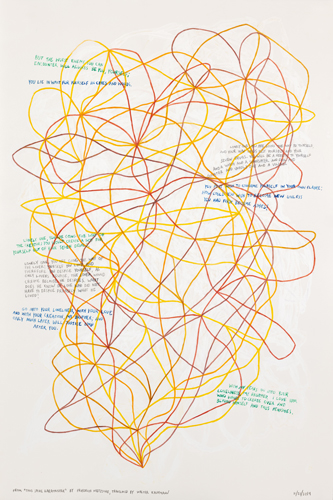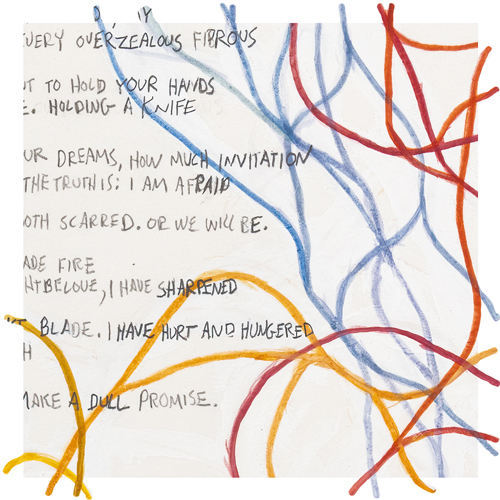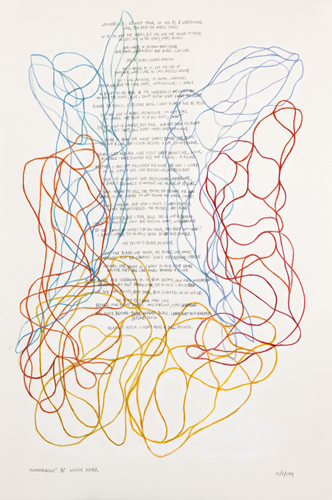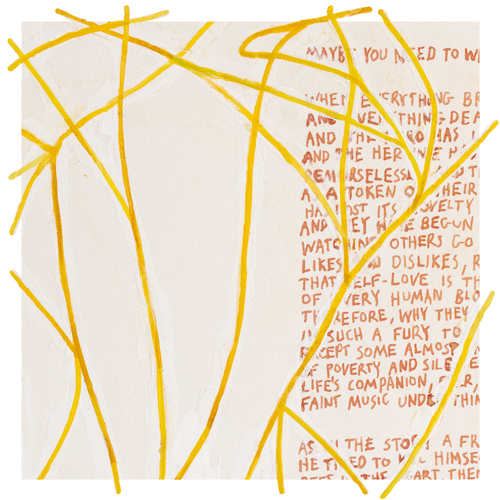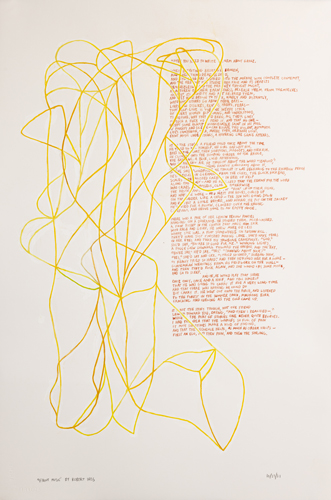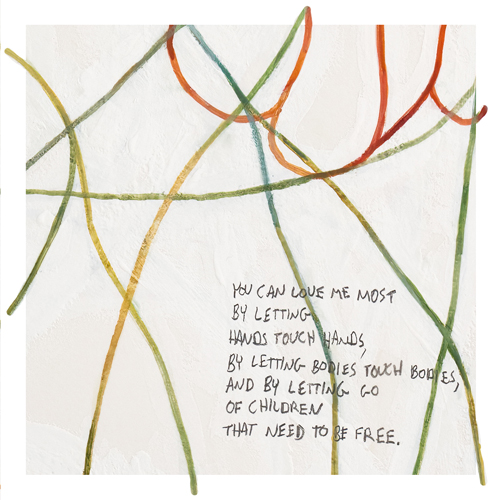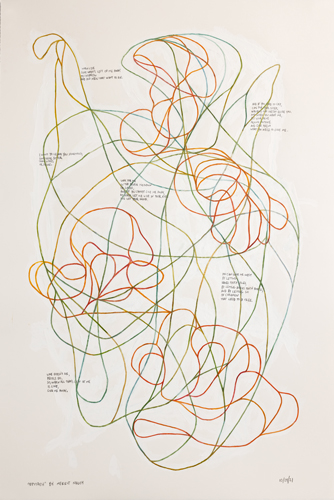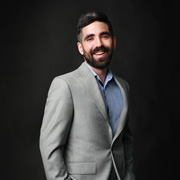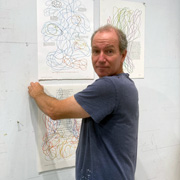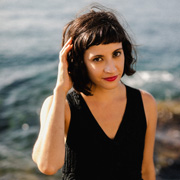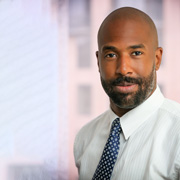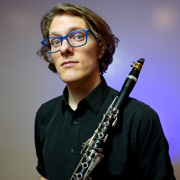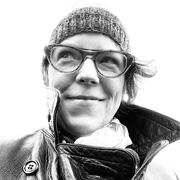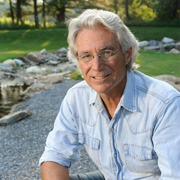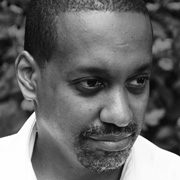Welcome! For the best viewing experience of Bibliography, please visit this site on a desktop or laptop.
“You think your pains and heartbreak are unprecedented in the history of the world, but then you read. It was books that taught me that the things that tormented me most were the very things that connected me with all the people who were alive, or who have ever been alive.” —James Baldwin
INTRODUCTION
Life is a paradox: We must do it alone (facing what is ours to face, no way around that truth), yet we cannot do it alone – especially when we suffer profound loss.
After his daughter died and his marriage collapsed, Peter found solace in writers whose sentiments and experiences echoed his own. These writers – ranging from Friedrich Nietzsche to Leslie Jamison – helped him make sense of his upended life. He saw in their prose and poetry his own story, and no longer felt such estrangement from the world.
Bibliography is an online exhibition centered on nine drawings, each exploring an aspect of Peter’s passage through loss. In addition to the drawings, the exhibition includes written reflections and video montages carrying us through the stages of his emotional journey. The chapters build upon each other, intertwining us in a dance of brush strokes and prose that vibrates with life.
A further layer of the project is music – each video incorporates improvisations by collaborators Daniel Anastasio, Ford Fourqurean and Iva Casian-Lakoš, whose contributions accentuate the universality of the drawings’ themes.
Slow down. Have a look. Turn up your volume. Enlarge for full-screen viewing. Press play and view the first piece in its entirety. Play it again, pausing to read the text. Watch a third time to take in the musical call-and-response.
Bibliography’s braiding of art, words and music conjures an emotional landscape we’re all part of by virtue of being human. With this exhibition, Peter reminds us that no matter how isolated we feel, intimate conversation with art (and each other) can sustain us.
—KRISTIN SEEBERGER
Kristin Seeberger is a writer from Baltimore currently pursuing her MFA in writing at Bennington College.
CHAPTER 1: THE QUICKENING
Leslie Jamison’s words awaken Peter’s memories of his daughter’s birth, even as he mourns her death.
“The Quickening” by Leslie Jamison
Peter Bruun
2020, 15”x22”, watercolor, gouache, ink & pencil on paper
I make my trek to the water’s edge two miles from home, the promise of spring in the light air. I sit, pull out my lunch, and read my new book, a collection of essays by Leslie Jamison.
“There you were: an arrival, a cry, the beginning of another world.”
Nostalgia for my Elisif: such promise, so much pain.
My thrill at her birth (more than 30 years ago now) rendered by Jamison’s words. From them, my drawing: a seed becomes a child, her fate her own, flowing like a river.
(There she was, before she was not.)
CHAPTER 2: MARINE (ELISIF)
An essay by Rebecca Solnit reminiscing on a friend who died of an overdose rings all too familiar for Peter.
Marine (Elisif)
Peter Bruun
2019, 15”x22”, watercolor, gouache & pencil on paper
I am lunching at the same waterside spot, butterflies dizzy around me.
For each of the past several days, a different chapter from Rebecca Solnit’s A Field Guide to Getting Lost. Today, Abandon – a requiem for her friend, Marine.
“Three things define her for me, her beauty, her talent, and her mercurial disposition.”
Marine is Elisif: bright-winged; pirouetting.
I draw: rhythm and repetition, ochres and greens, aquas and purples, a symphony of color, swaying like hypnosis. There, on the left, red and small, easy to miss, turning away (more lost than we can know), a leaving.
She leaves.
CHAPTER 3: AMY (ELISIF)
For Peter, Leslie Jamison’s lament for Amy Winehouse becomes a keen for his daughter.
Amy (Elisif)
Peter Bruun
2019, 15”x22”, watercolor, gouache & pencil on paper
“I would have loved to hear Amy Winehouse sing sober.”
Leslie Jamison (who I’m reading again today) had also been lost to substances for a time. For her, it is no leap of imagination to Amy (to Elisif).
“Like she’s been air-dropped into a moment she can’t possibly fathom.”
A cloud’s shadow skitters by. Looking up, I think of them as a trio of raging brilliance: Amy the singer. Elisif the artist. Leslie the writer (the survivor), her prose elegiac.
“Drunken stumbling under the broken tower of her beehive, her body barely holding up the weight until it wasn’t, until it couldn’t any longer.”
That’s the moment I draw: her beehive, swaying in purple and black.
(I would have loved to see you draw sober.)
CHAPTER 4: ELSEWHERE
Mark C. Taylor precisely evokes the uncharted reality Peter finds himself in after his daughter’s death.
Elsewhere
Peter Bruun
2019, 15”x22”, watercolor, gouache & pencil on paper
“To Peter, who has been elsewhere.”
This, the inscription from Mark C. Taylor to me in the copy of Field Notes from Elsewhere: Reflections on Death and Dying. In his book, he writes of his own near-death experience, and where it brings him.
“After such a journey nothing, absolutely nothing, remains the same – everything must be reconsidered and reevaluated. Family, friends, foes, colleagues, values, ideas, work, play, success, failure are no longer what they previously seemed to be.”
I toss my apple core aside. The ocean is different today: frothy, like the aftermath of a storm.
My daughter has died, and I am elsewhere.
(My drawing, puke-yellow and green; all teeter and fall.)
CHAPTER 5: HERMIT CRABS
His marriage in question after his world is broken, Peter finds clarity in Rebecca Solnit’s rumination on hermit crabs.
Hermit Crabs
Peter Bruun
2019, 15”x22”, watercolor, gouache & pencil on paper
Heading to my lunch spot, I pass children on holiday. The season has changed.
It’s not so much that I fell out of love with one as I fell in love with another. I had no story for that, no solace or explanation – until reading Rebecca Solnit.
“Many love stories are like the shells of hermit crabs.”
Her allegory resonates for me.
“The hermit crab: grabbing on one side and clinging on the other. Eventually the creature outgrows the shell, and thus comes the risky moment called the molt, when the crab is between shells.”
I draw that hermit crab (I draw myself) – between here and there, between love stories – “soft and vulnerable.”
CHAPTER 6: LONELY ONE
Friedrich Nietzsche’s words help Peter name and begin to move through feelings of guilt and blame over the dissolution of his marriage.
“Thus Spoke Zarathustra” by Friedrich Nietzsche
Peter Bruun
2019, 15”x22”, watercolor, gouache, ink & pencil on paper
At the water’s edge, pine trees yield to pebble and stone: my oceanside place.
In Thus Spoke Zarathustra, Nietzsche’s words seem to speak of me.
“Lonely one you are going the way to yourself, and your way leads past you and your seven devils.”
I am my devil – I have left my wife. I am an abandoner – the betrayer.
“But the worst enemy you can encounter will always be you, yourself. You lie in wait for yourself in caves and woods.”
Cramped on my rocky shoreline spot, I spin and burn. (It’s what I draw.)
CHAPTER 7: MAYBE THE TRUTH
A poem by Nicole Homer helps Peter understand his story as a two-sided one.
“Underbelly” by Nicole Homer
Peter Bruun
2019, 15”x22”, watercolor, gouache & pencil on paper
Walking back, sweating from the heat, I pluck at wild blueberries ripening by the roadside.
I have just read Underbelly. For the poet, a cautionary tale to a prospective love. I read it differently, the words offering a corrective lens on my relentless self-recrimination.
“In it I’m not the hero, but I’m not the villain either
so let’s say in the story I was human.”
This: a reframing; a maybe truth.
“Maybe the truth is: Both. Blade and guard.”
(The drawing: us split, left and right, blade and guard, poetry cradled between.)
CHAPTER 8: FAINT MUSIC
Having journeyed through grief and loss, Peter discovers affirming grace in a Robert Hass poem.
“Faint Music” by Robert Hass
Peter Bruun
2021, 15”x22”, watercolor, gouache & ink on paper
A bald eagle speck appears at the horizon. Today, I bring along Robert Hass: the poem, Faint Music.
“Maybe you need to write a poem about grace.”
Daughter dead, marriage over, family scattered … grace is what I long for.
“I had the idea that the world’s so full of pain
it must sometimes make a kind of singing.”
Reading these lines, I realize I am part of that chorus: in singing our pain, we find acceptance, and release.
I copy his feathery words in russet ink. From them, hope rises in yellow diaphanous lines.
I hear the faint music; I find grace.
CHAPTER 9: LOVE DOESN’T DIE
A poem by Merrit Malloy embodies the serenity and acceptance Peter feels after traveling through so much pain.
“Epitaph” by Merrit Maloy
Peter Bruun
2021, 15”x22”, watercolor, gouache & pencil on paper
Autumn. Ochre needles carpet the forest floor and browning leaves cling to trees. I sit again at the shore, lunch in hand. Low silver light dances on the water’s dimpled surface as jittery red squirrels leap from branch to branch gathering cones for winter.
I have come so far; endured so much.
I read once more: Merrit Malloy’s Epitaph.
“Love doesn’t die,
People do.
So, when all that’s left of me
Is love,
Give me away.”
In the soft light of day I exhale, and know everything is okay.
POSTSCRIPT
Mark C. Taylor, a professor of Peter’s at Williams College and author of Field Notes on Elsewhere: Reflections on Living and Dying (the inspiration for the drawing Elsewhere), shares his insights on Peter’s art:
“If I had to choose a word for Peter’s impressive body of work, it would be Entanglement. As the years have passed, forms have slimmed to lines – entangled lines whose subtle colors figure the lives whose stories they tell…” READ MORE
Public Programs
Opening Conversation
Artist and curator Peter Bruun is joined by writer and creator of the Baldwin Prize Lionel Foster to introduce Bibliography and explore the question, “How does art help?” In this wide-ranging conversation, the co-hosts invite the audience to share their own examples of how creating or experiencing art and writing has offered sustenance and companionship.
Wednesday, October 19, 2022, 7:00 p.m. ET
Art as Solace and Muse
How do you survive the death of your child? For Peter Bruun and Kristin Seeberger, the answer in part lies in mining art and writing by others, which often becomes inspiration for creating their own. Join them and writer Clifford Thompson as they discuss the myriad ways art can be a means to address life’s hardest things.
Thursday, November 10, 2022, 6:00 p.m. ET
A Kind of Singing: Putting Music to Bibliography
Artist and curator Peter Bruun moderates a conversation with Daniel Anastasio, Iva Casian-Lakoš, and Ford Fourqurean, three musicians whose improvisations play a pivotal role in bringing Peter’s drawings in Bibliography to vivid emotional life. Join them as they share their process, discussing what lies behind their creative choices.
Wednesday, December 7, 2022, 7:00 p.m. ET
About the participants
Daniel Anastasio
Daniel Anastasio is a soloist, chamber musician, educator, and curator based in San Antonio, Texas. Having recently joined the faculty of San Antonio College, Anastasio is a member of Agarita, a San Antonio-based chamber ensemble dedicated to making classical music accessible to all, including the most under-resourced populations. He is also a member of Unheard-of//Ensemble, a Manhattan-based ensemble that champions new music and includes multimedia performances when on tour.
Peter Bruun
Peter Bruun is an artist, curator, and writer. He received a BA in Art History from Williams College in and went on to receive an MFA from the Maryland Institute College of Art’s Mount Royal School of Art. Peter pursued his art practice in Maryland until 2019 when he moved to Maine, where he now pursues his art, writing, and curatorial practice under the auspices of Bruun Studios.
Iva Casian-Lakoš
Iva Casian-Lakoš is a cellist known for both her virtuosity and interdisciplinary versatility from classical cello to boundary-stretching new works involving choreography, singing, acting, improvisation, and more. She performs across the United States and Europe with ensembles Synesthetic Project, hear|say, Ensemble Illyrica, and Unheard-of//Ensemble. Iva enjoys working on commissioned projects with composers, and also collaborates with visual artists, videographers, and dancers in interdisciplinary projects.
Lionel Foster
Lionel Foster is the founder of the Baldwin Prize, a scholarship and essay competition named for writer and humanitarian James Baldwin. The Baldwin Prize helps young people use the written word to work through how they want to show up in the world. He has written for Baltimore City Paper, The Baltimore Sun, The Chronicle of Philanthropy, and other publications.
Ford Fourqurean
Ford Fourqurean is an award-winning clarinetist, electronic musician, and composer based in New York City. He serves as artistic director and clarinetist of Unheard-of//Ensemble, dedicated to presenting unique multimedia concert experiences across the United States. With a repertoire of over 100 works written just for it, the ensemble is known as “a unique force” (The Clarinet Journal). Ford is Founder and Education Director of the Collaborative Composition Initiative workshop (CCI//Sessions) bringing together composers each summer from across the country.
Kristin Seeberger
Kristin Seeberger is pursuing her MFA in writing at Bennington College after a 25-year career in design leadership and brand management. She has an MFA from Virginia Commonwealth University, Master of Design from the University of Cincinnati, and was a Fulbright Fellow at the Aalto University School of Arts, Design and Architecture in Helsinki, Finland. She is a trustee of Baltimore’s Creative Alliance and is active with the non-profit LITT (Love in the Trenches).
Mark C. Taylor
Mark C. Taylor is Professor of Religion at Columbia University and has written extensively on art and architecture.
Clifford Thompson
Clifford Thompson is the author of What It Is: Race, Family, and One Thinking Black Man’s Blues (2019), which was selected by Time magazine as one of the “Most Anticipated Books” of the season. His personal essays and writings on books, film, jazz, and American identity have appeared in publications including The Best American Essays 2018, The Washington Post, The Wall Street Journal, and The Village Voice, and for over a dozen years he served as the editor of Current Biography.
Credits
Bibliography was created by Peter Bruun, with website design by Megan McCarthy and development by Christie Wood. All photographs of Peter’s art by David Clough. Thanks to Daniel Anastasio, Iva Casian-Lakoš, and Ford Fourqurean for their musical collaboration; Clifford Thompson and Lionel Foster for program participation; Kristin Seeberger and Mark C. Taylor for their written contributions. Special thanks to Leigh Perkins for editorial expertise informing every aspect of the project. Bibliography is generously sponsored by the Nancy Patz Fund.



